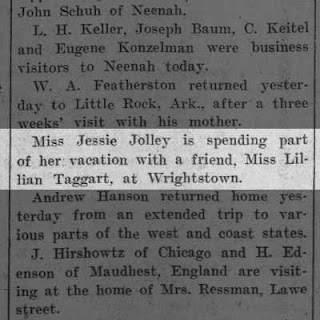Who is Martin Woodruff? Martin is my 4th great-grandfather. The only information I have to support this are a few newspaper articles from the Appleton Post-Crescent. from the Appleton Post-Crescent, Sept. 30th, 1898. And then almost exactly a year later, his obituary appears. from the Appleton Post-Crescent , Sept. 28, 1899, Thursday. From these articles we get his approximate birth date, February 1795, in Bohemia. His arrival in the States in 1854, residence in Milwaukee, and then death date of September 21, 1899, in Green Bay. I can't find him anywhere in the census for Milwaukee, or Green Bay. His death doesn't appear to be noted in the Green Bay newspapers. Why did he move to Green Bay, if his only child lived in Appleton? Does he have other relatives? Is Woodruff even his birth name? If he is from Bohemia, its probably changed to sound more American. What other name variants should I be looking for? Wotruf?...













Comments
Post a Comment